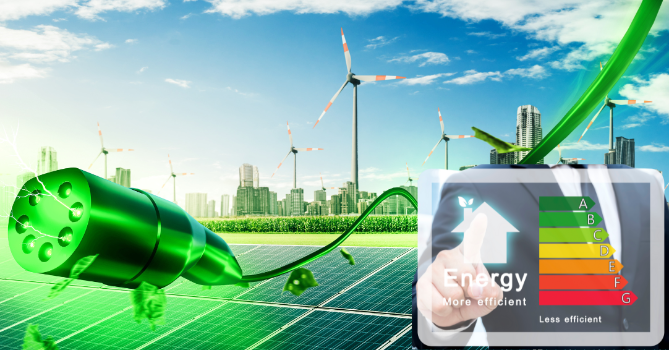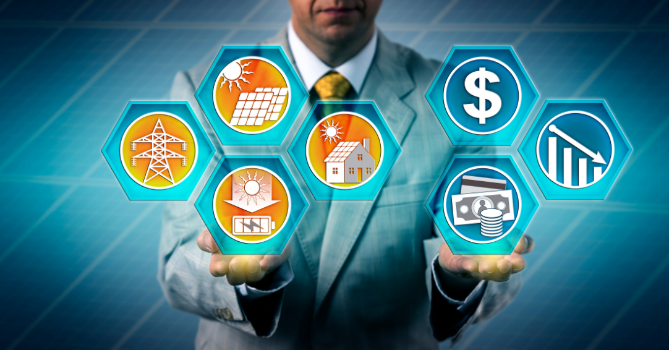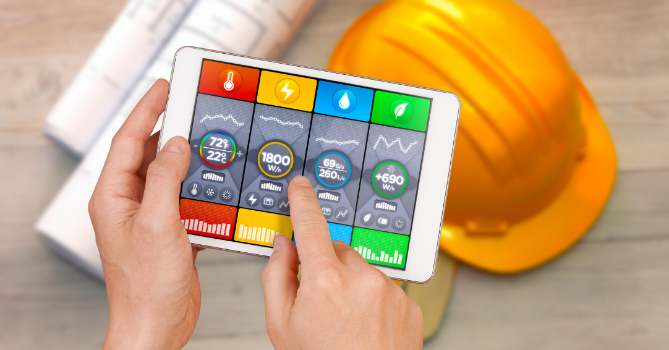.png)
BIM for Renewable Energy Integration: The Seamless Symphony
Introduction
The need for renewable energy in construction is more urgent than ever. As the industry focuses on sustainability, integrating energy sources like solar, wind, and geothermal is becoming a priority. Building Information Modeling (BIM) plays a key role in this process. BIM is a digital tool that allows architects, engineers, and builders to plan, design, and manage projects with greater accuracy. It provides detailed 3D models and data to ensure that projects run efficiently and meet sustainability goals.
Incorporating renewable energy systems can be complex, but BIM helps make the process smoother. By using BIM, teams can integrate these energy solutions early in the design phase, ensuring better project outcomes.
This blog will explore how BIM and renewable energy work together. We’ll look at the benefits, challenges, and future trends of using BIM to seamlessly incorporate renewable energy technologies into construction projects.
BIM’s Role in Renewable Energy Integration
BIM’s digital modeling capabilities make it easier to incorporate renewable energy systems into building designs. Whether it’s solar panels, wind turbines, or geothermal heating, BIM allows project teams to plan and integrate these technologies early in the design process. By using BIM, architects and engineers can visualize how renewable energy sources will fit within the overall design, ensuring seamless integration.

One of BIM’s key strengths is its ability to model energy efficiency. With BIM, teams can simulate how a building will perform in terms of energy use. This allows them to optimize the placement of solar panels or wind turbines for maximum efficiency. BIM also helps reduce waste by identifying potential issues before construction begins, saving both time and resources.
For example, when designing solar panel systems, BIM can model the roof’s orientation and shading to determine the best placement for energy generation. In geothermal heating systems, BIM can help engineers visualize the ground piping network, ensuring efficient installation.
BIM’s role in renewable energy integration doesn’t stop at design. It also helps with ongoing building performance, allowing teams to monitor energy output and make adjustments as needed. Overall, BIM makes integrating renewable energy sources into buildings smoother, more efficient, and more sustainable.
The Benefits of BIM for Renewable Energy Projects
BIM offers several practical benefits for renewable energy projects, making it a valuable tool for both designers and builders. One of the biggest advantages is improved collaboration and communication. When integrating complex energy systems like solar or wind power, multiple teams need to work together. BIM’s shared digital model allows everyone to stay on the same page, ensuring clear communication from the design phase through to construction.

BIM also helps reduce project timelines. Because it’s data-driven, BIM improves accuracy and helps teams identify potential problems early. By catching these issues before they become costly errors, teams can keep projects on track and avoid delays. This efficiency leads to faster project completion, saving time and money.
In terms of sustainability, BIM supports the creation of energy-efficient designs. By modeling how a building will use energy, teams can optimize renewable energy systems for better performance. This leads to reduced energy consumption and lower carbon footprints. BIM’s ability to track and manage energy use makes it easier to meet sustainability goals and improve overall building performance.
Another key benefit is BIM’s ability to simulate energy performance before construction begins. By running these simulations, teams can test different scenarios, such as varying panel placements for solar energy or turbine configurations for wind power. This helps optimize energy output and ensures that renewable energy systems are designed for maximum efficiency from the start.
Overall, BIM plays a crucial role in improving collaboration, boosting accuracy, and creating more sustainable, energy-efficient buildings in renewable energy projects.
AI and Automation in BIM for Renewable Energy
AI and automation are transforming the effectiveness of BIM for renewable energy integration. AI-driven tools within BIM can analyze vast amounts of data to predict energy consumption and optimize the design of energy systems. For instance, AI can help determine the best placement for solar panels by analyzing sunlight exposure, shading, and local weather patterns. This data-driven approach ensures that renewable energy systems are designed for maximum efficiency.

Automation also plays a key role in speeding up decision-making. By automating tasks such as system configurations and energy simulations, BIM allows teams to quickly make adjustments without manual intervention. This not only saves time but also improves accuracy in the design and integration of renewable energy solutions.
Digital twin technology further enhances BIM’s effectiveness. A digital twin is a virtual replica of a physical building that allows for real-time monitoring and adjustments. Once a building is operational, AI-powered digital twins can track energy performance, identify inefficiencies, and suggest improvements. This ensures that renewable energy systems continue to operate at peak efficiency throughout the building’s lifecycle.
AI and automation in BIM create smarter, faster, and more efficient ways to integrate renewable energy into construction projects.
Challenges in Integrating BIM and Renewable Energy
Integrating BIM with renewable energy systems comes with several challenges. One of the main technical challenges is managing the complexity of data. BIM models contain vast amounts of information, and when adding energy simulations, the data load increases even more. Ensuring that all this data is accurate and easy to interpret requires advanced software and skilled teams. Energy simulations, which are crucial for optimizing renewable energy systems, can also be complicated and time-consuming.

Cost is another challenge. While BIM improves project efficiency, the upfront investment in technology and specialized knowledge for renewable energy integration can be high. Teams need experts who understand both BIM and renewable energy systems to achieve successful integration, which adds to project costs.
Clear communication and collaboration are essential to overcoming these challenges. Since renewable energy systems are complex, it’s important for architects, engineers, and energy specialists to work together closely. Miscommunication between teams can lead to costly errors or delays. BIM helps by providing a shared platform, but it’s still important for teams to have regular communication and ensure everyone is aligned on project goals.
By addressing these challenges early on, teams can integrate BIM and renewable energy systems smoothly and efficiently.
Future Trends: BIM and Renewable Energy Integration
As sustainability becomes a top priority, the integration of BIM and renewable energy will significantly shape the future of the construction industry. More buildings will incorporate renewable energy systems, such as solar and wind power, from the design phase onward. This trend is driven by the growing need for energy-efficient buildings and the push to reduce carbon footprints.

Emerging technologies like AI and digital twins will play a key role in optimizing energy use. AI will help teams make smarter decisions about energy consumption, while digital twins will allow for real-time monitoring of energy performance once buildings are operational.
Looking ahead, BIM is expected to be crucial in achieving net-zero energy buildings. By using BIM to plan, design, and monitor energy systems, construction teams will create more sustainable buildings that meet green certification standards. This seamless integration will drive the industry toward a more energy-efficient and sustainable future.
Conclusion
BIM plays a crucial role in integrating renewable energy systems into construction projects, making designs more energy-efficient and sustainable. Its ability to streamline collaboration, optimize energy performance, and reduce project timelines makes it an essential tool for the future of green building. As the construction industry moves toward net-zero energy goals, adopting BIM-driven approaches will enhance sustainability and improve project outcomes. It’s time for stakeholders to embrace BIM and renewable energy integration to create a greener, more energy-efficient future for the industry.